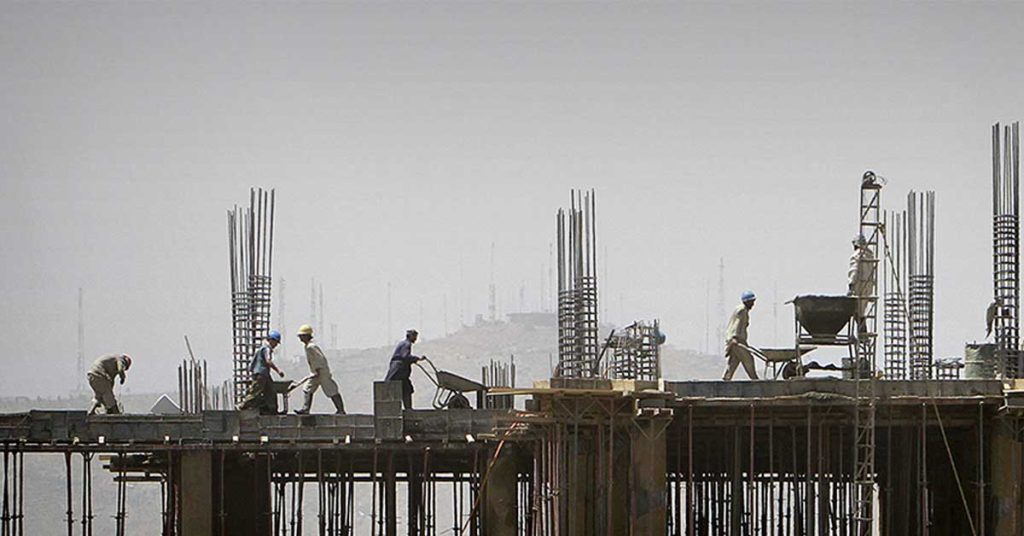GEM Engserv Pvt. Ltd is an ISO 9001:2015 certified organization, certified by TUV India in accreditation with National Accreditation Board for Certification Bodies (NABCB).
GEM Engserv Pvt. Ltd is an ISO 9001:2015 certified organization, certified by TUV India in accreditation with National Accreditation Board for Certification Bodies (NABCB).

All construction professionals without exception would take pride in being part of a construction project that is completed on time. A corollary of this is that there is a stigma attached to projects which are delayed or take too long to complete.
Then there are some who claim some sort of record for fast-track completion. Slab cycle time, length of pavement laid down in a day, time taken to complete a stand-alone building are some of the metrics we hear about in this context. Meanwhile, technological innovation and extensive mechanization are the twin engines that drive fast-track construction.
While completing a construction project as per schedule is unquestionably a desirable goal, today we examine whether there are any hidden costs associated with completing projects with undue haste; just to create a record or without a proper cost-benefit analysis of fast-tracking. While these technical arguments are made in the context of the construction of buildings, they apply equally to all other types of structures.
Various strategies can be adopted for fast-track construction, some of which are as listed below:
It is essential to take a holistic view and examine the consequences of these strategies on other performance metrics of any project i.e. cost, quality and safety. For the purpose of this note, today we shall evaluate use of technology and off-site manufacturing (prefabrication/precast) as one of the methodologies for fast-tracking a project.
Setting stiff deadlines for activities creates psychological pressure on all stakeholders and may subtly force workmen to take greater risks. It intuitively appears that fast-tracking a project would have a negative impact on construction safety, and this is not by itself mitigated by moving to prefabrication.
Safety risks need to be mitigated by putting in place additional measures specifically considering the situations arising out of the inclination to achieve progress. This applies to conventional methods of construction as well as off-site manufacturing and on-site assembly. Prefabrication or precast shifts significant quantum of work off-site which naturally improves the level of safety at site while also helping improve overall achievement of milestones.
However, use of equipment at the fabrication site makes the nature of activities in the shop more hazardous and requires greater attention to safety management. Assembly of prefabricated elements also requires specialized handling using specific equipment and therefore a higher emphasis again with respect to equipment safety.
Essentially, irrespective of construction methodology, fast-tracking of a project needs to be accompanied by a higher focus on safety, which contribute to additional cost.
As in the case of safety, prefabrication has a positive effect on quality as the works take place in controlled environment. Work in factories make it easier to streamline construction process and introduce quality checks more effectively during work and pre-dispatch. In the ideal / theoretical world, there should be no link between speed and quality of construction.
However, there are many instances of conflict between time (speed) and quality, and all construction professionals choose speed over quality when faced with this tough choice. Unless special and specific controls are built in the processes, fast-track construction is highly likely to result in more compromises on quality front.
This needs to be considered carefully at the planning stage since the same systems and processes applicable across regular construction projects would falter and produce disastrous if applied unchanged to fast-track construction.
Unless there is a clear case of economy of scale, efforts to speed up construction on the basis of pre-fabrication and mechanization will cost more than the convention on-site labour intensive construction.
Most technological advancements such as pumping concrete, use of system formwork, pre-cut & bend rebar, using machine to spray plaster/paint to name a few, required the eco-system to mature before these became the norm and not exceptions and thereby cost effective.
This situation will likely prevail for all new technologies. The financial justification for fast track construction therefore depends upon ‘time value of money’. The concept of calculating cost of delay of one day in completion of the project can be a powerful tool to align interest of all stakeholders to the common goal of fast track construction and provide clear cut guidelines to the decision makers for investing in costlier solutions to fast track construction.
Before concluding, we need to realize that removing waste from construction processes and faster decision making are two approaches in which time-cost-quality-safety are all aligned. These aspects fall in the realm of management and not technology. Construction industry needs to learn from the manufacturing sector and bring in concepts such as TQM and lean construction to carry out fast track construction as a competitive advantage and not just a buzzword!